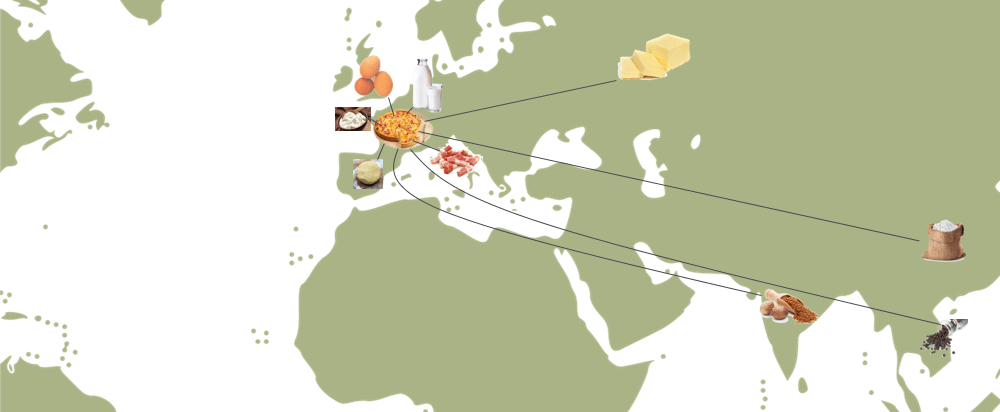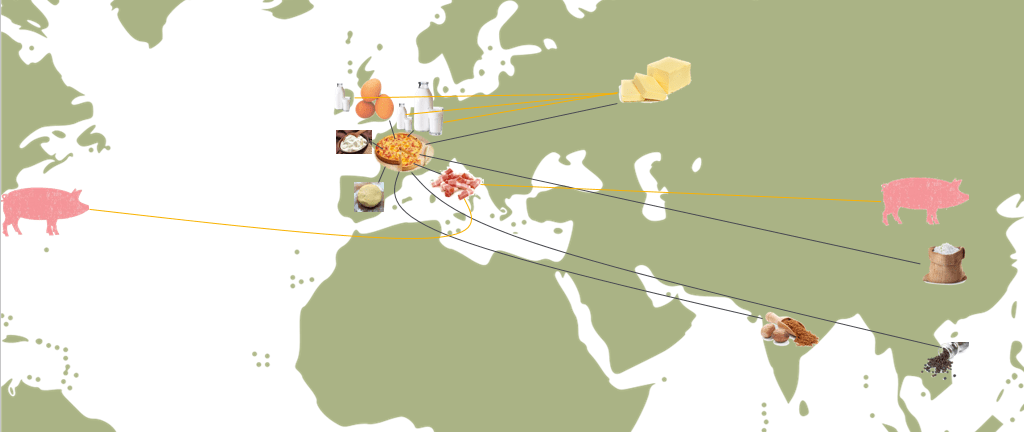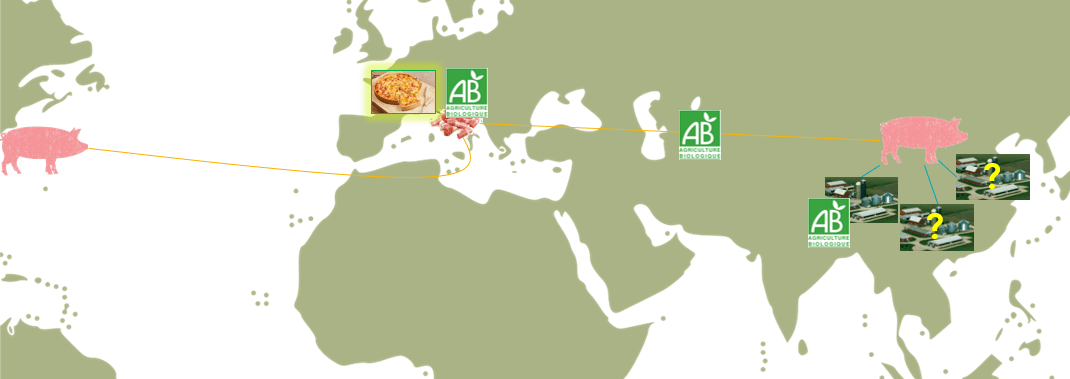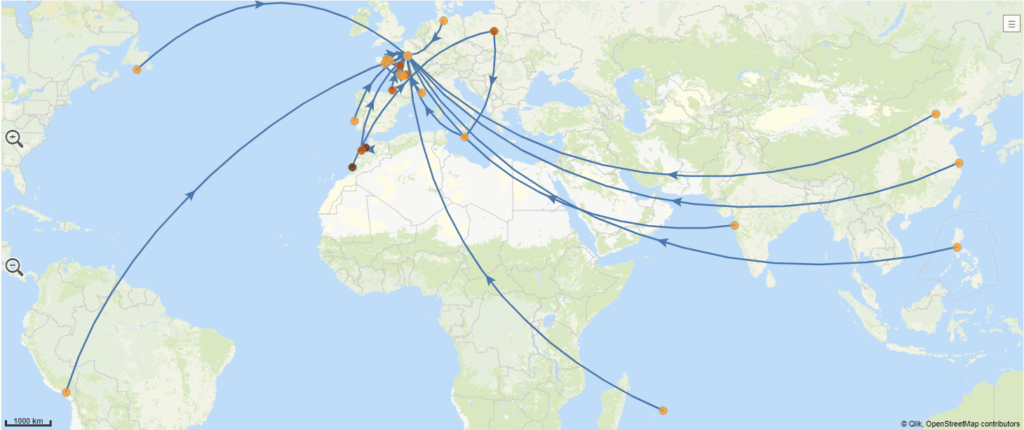Why do we hear the word « transparency » all over today? Because consumers are looking for more transparent products. They want to know what is in the products they buy. How were they made? Where do they come from?
We have heard about food recalls such as baby milk in France or clothes being recalled after failing safety tests.
 To illustrate the concept of transparency, let’s take the example of a quiche, a famous French dish. Let’s say my quiche is sold in France. The French retailer purchases the quiche from a French manufacturer, who is the tier 1 supplier for the retailer.
To illustrate the concept of transparency, let’s take the example of a quiche, a famous French dish. Let’s say my quiche is sold in France. The French retailer purchases the quiche from a French manufacturer, who is the tier 1 supplier for the retailer.
The quiche is made of several ingredients: dough, eggs, milk, etc. But where do these ingredients come from? How were they processed? Do they respect the environmental policy I have put in place? To answer those questions, we need transparency.
1. Mapping the supply chain
One of the first concepts of transparency is supply chain mapping from source to store. For our quiche, the dough, ham, eggs, crème fraiche and milk come from Europe. The butter comes from Russia, and the nutmeg, salt, and pepper from Asia.

Voilà! I have my supply chain. But we all know that it does not stop there. Those are only the tier 2 suppliers. Who are the suppliers of my suppliers? What processes are used in their facilities?
The ham in my quiche comes from the USA and China. The butter is made from milk coming from Germany, the Netherlands, and Ireland. But imagine if just one of these milk suppliers has a food safety issue – what would be the impact on my supply chain?
 Mapping my supply chain is the first and most important action I need to take to know all my suppliers and their country of origin. But this is just a first step. Today, consumers want to know even more about their products.
Mapping my supply chain is the first and most important action I need to take to know all my suppliers and their country of origin. But this is just a first step. Today, consumers want to know even more about their products.
2. Product compliance
My quiche is certified organic. I have the organic certification for my ham, and for my ham suppliers based in China. This Chinese supplier works with three farms, but I only have one certification for one of these farms. Thanks to transparency, I know the other two farms and can ask them to send their certifications. In this way, transparency allows me to verify my product compliance from end to end.

3. Consumer communication
Finally, the third concept of transparency involves communicating with your consumers. Now that you have identified all this detailed information about your supply chain, you want to share it with the world! You could share a map that allows your consumers to see the origins of all the ingredients used in the quiche.

You could also use third-party applications to communicate directly with your consumers in store. For example, we helped Mars Food and Carrefour China connect directly with their shoppers and share their supply chain information for greater transparency and consumer trust.









